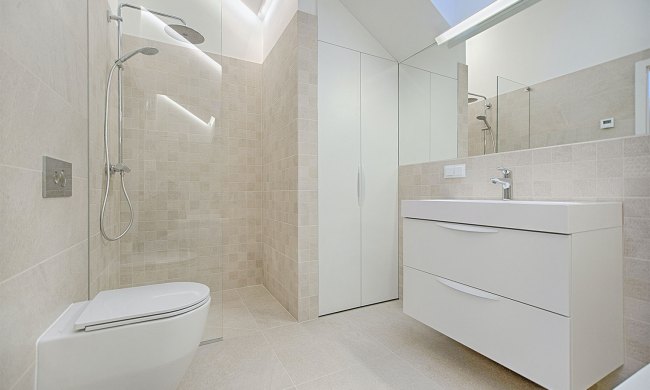A windowsill garden offers you the ability to grow plants—even edible ones—inside your home, regardless of the season. Windowsill gardens also extend the growing season so that you can enjoy fresh-snipped herbs, or fragrant flowers, even during the winter.
You can use any bright and sunny window to start your windowsill garden, provided the sill space is deep and sturdy enough to support your planters or containers, and temperatures near the window remain consistently warm. It’s both simple and inexpensive to start a windowsill garden.
We’ll show you how to start a windowsill garden and how to choose the best windowsill plants with these great garden ideas!
 What every windowsill garden needs
What every windowsill garden needs
- Windowsill: Although it doesn’t need to be a bay window, the windowsill you select should have sufficient depth to hold a variety of different types of planters.
- Sunlight: When choosing a windowsill, you’ll also want to ensure that it gets at least five hours per day of sunlight, so even plants that require full sun have adequate light to thrive.
- Pots or containers: Whatever containers you choose, from individual pots to wooden boxes, be certain they fit comfortably within the space constraints of your windowsill and have adequate drainage holes.
- Potting soil: Different plants may require different soil types or fertilizer, but start with a good, quality potting soil for all of the plants you are planning to grow in your windowsill garden.
- Water & maintenance: In addition to regular watering, most plants require occasional pruning to ensure that plants don’t get overcrowded inside their containers.
 Best windowsill plants
Best windowsill plants
Not every plant is meant to thrive on a windowsill. These plants are tried-and-true standouts when it comes to cultivating your perfect indoor garden.
Herbs
Perfect for growing in smaller spaces, herbs are the most popular plant category for windowsill gardening. When planting in a kitchen window, your little garden provides a constant source of fresh herbs for cooking and, in many cases, incredible aromas, too. You can even group several herbs in a single container, providing they have similar water needs. Love fresh mint? Give it its own container; it grows abundantly and will crowd out any other plant it’s with.
Alliums
Green onions and garlic are perfect for windowsill gardens because they need very little space and soil. In fact, green onions can be grown without any soil whatsoever in a mason jar filled with water.
Succulents
If you’re looking for low-maintenance plants, there is no better choice than succulents. There are many different succulent varieties available for your windowsill garden, and the only real care they demand is consistent warmth—be sure not to overwater.
Flowers
Want to add a little bit of color and fragrance to your windowsill garden? Many flower varieties thrive on a sunny windowsill, including geraniums, hyacinths, daffodils, and African violets.
 Planting your windowsill garden: A step-by-step guide
Planting your windowsill garden: A step-by-step guide
- Decide on the type of garden you’re going to plant: Herbs, vegetables, succulents, flowers, or a mixture of a few. Once you’ve decided on the type of garden you will be planting, do a little research. Choose your plants wisely, knowing which can be planted together in containers, what their soil and water preferences are, and so on.
- Plan it out: Select a windowsill that gets at least five hours of sunlight per day—ideally a south-facing window. Since windowsills don’t offer unlimited space, determine how many planters you have room for and how best to use the space in each planter or container.
- Seeds or seedlings, which is better? Seeds will take more time to sprout and grow, so many beginners opt to start with young plants, also called seedlings. In the case of certain alliums (like garlic), you can plant organic cloves in dirt and wait for them to sprout.
- Choosing containers: Make sure your containers provide good drainage, as consistently soaked roots will cause many plants to die. If containers have drainage holes, always place a tray beneath to catch excess water and protect your windowsill from moisture damage. Some plants benefit from a layer of drainage rocks or pumice beneath the potting soil rather than drainage holes in the container.
- Soil selection: Potting soil is considered best for most windowsill garden plants. It is lighter, with more drainage capabilities than standard garden soil. Note: adding organic fertilizers or homemade compost to the soil gives the plants the extra nutrients they’ll need to grow strong and healthy.
- Water: Once your garden is planted, sprinkle with water until the soil settles in. Then water appropriately as per each plant’s needs.
Regardless of your gardening experience, or lack thereof, it’s so easy to brighten up your home with plants you’ve grown yourself right on your windowsill. Pick the perfect window, decide on the type of plants you want to grow, and get ready to bring the garden indoors!
 What every windowsill garden needs
What every windowsill garden needs Best windowsill plants
Best windowsill plants Planting your windowsill garden: A step-by-step guide
Planting your windowsill garden: A step-by-step guide


